
views
Making Safe Driving Choices

Check the depth of the mud. Before you hit a muddy stretch of road, if it looks deep at all, hop out of your vehicle and take a closer look. Get a stick and test the depth of the mud by sinking it in. Try to spot any objects hidden in the mud, such as large rocks, which could damage the underside of your vehicle. Expect that you will get a bit dirty checking out the road, but it could save you lots of time and hassle in the long run. Make sure that it is safe to get out of your vehicle by checking for traffic and environmental hazards.
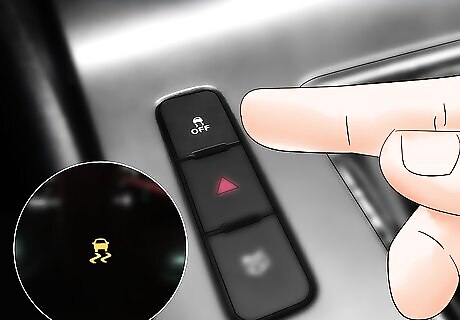
Engage traction control. Many newer model vehicles come with a standard traction control option. This feature may automatically engage when you hit poor driving conditions. If that isn’t the case, then you’ll need to activate it by pressing a button which is usually located on the dash or console area. Check your owner’s manual for more details about your particular vehicle. However, be aware that the traction control may make it more difficult for your vehicle to climb out of the mud if it gets stuck. In this case, disengage the traction feature and only turn it back on when you are moving once again.
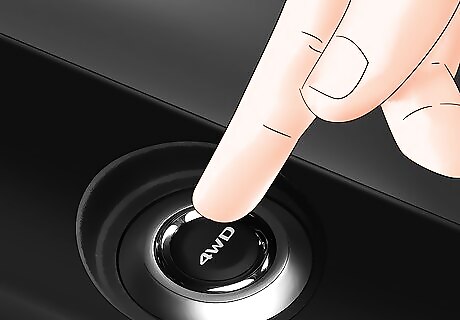
Switch to 4WD. Locate your gear lever or switch on your dashboard or console area. You will see a series of labels, like 2H, right next to it. When you need that extra boost of traction, move the lever or switch to the position of 4H or 4L. Going to 4H will engage all four wheels on your vehicle. However, if the road is really nasty, go ahead and move to 4L, as this will cause your tires to move more slowly but with greater gripping power. Be aware that all-wheel drive vehicles will not have the 2H option, as they use all four tires all the time. Some 4WD systems can begin to seize and dry out if they not used over a long period of time. Try to use your 4WD every two months or so, even it if’s just on slightly wet roads.
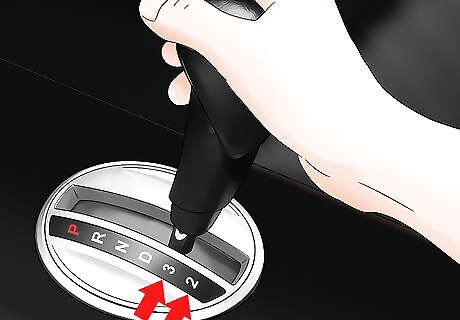
Go to a lower gear. If you are driving a 2WD, go ahead and move down to the second or third gear. Depending on the design of your vehicle, this usually just requires that you move the gear lever down to the spot marked “2” or “3.” This will allow you to keep a consistent pace across a difficult, muddy road. Switch back to a higher gear whenever you hit more stable roads to lessen the pressure on your engine and wheels.
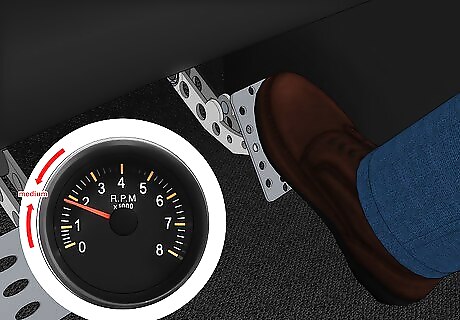
Go easy on the gas and brake pedals. Try to keep going for as long as you can by using your initial momentum. Keep a steady, medium speed. If you do need to press the gas pedal, do so slowly to avoid causing the tires to spin out. Also, be aware that you might skid if you hit the brakes too hard. Avoiding any rapid speed changes gives your tires a moment to adjust to the terrain and get a good grip.
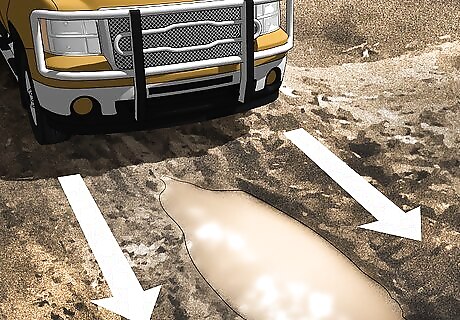
Avoid any deep ruts. The goal is to place your tires in an untouched part of the road or within the highest rut area possible. Otherwise, you run the risk of sinking into lower/deeper ruts or even getting stuck on the middle area between ruts. This is an especially important step to follow if you are driving on a road that is frequented by larger vehicles, such as semi-trucks. It is helpful to know the ground clearance of your vehicle, or the space that be measured between your vehicle’s undercarriage and the road. This will give you a better idea how your vehicle will handle ruts or deeper patches of mud.
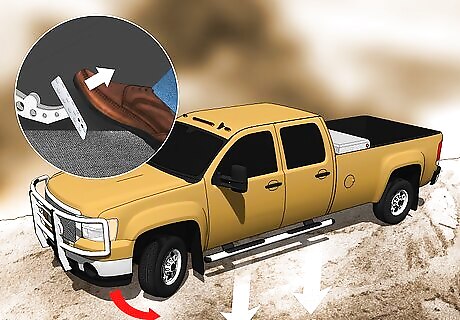
Correct a front wheel skid. If your vehicle continues to travel straight or to the side, even when you turn the steering wheel, then you are in a skid. Let off the gas and wait for the vehicle to slow down. As your car slows, wait for the front wheels to gain control once more. Then, turn your steering wheel in the same direction. This should let you regain control over the whole vehicle. Resist the urge to slam on the brakes if you begin to skid. This will only cause you to lose control faster. Hidden patches of ice under the mud can cause you to skid out. That is why you take essentially the same actions to regain control on a muddy road as you would on an icy one.
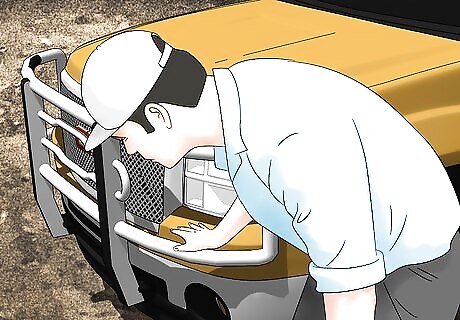
Inspect your car for damage afterwards. When you are back on dry road, pull over in a safe spot and walk around your vehicle looking for any problems. Examine your undercarriage to make sure that all brake lines and other parts are undisturbed. Take a moment to wipe any mud off your side mirrors and windows as well. Drive slowly as you go out of the mud, so that your tires will have a sufficient chance to toss off all of the mud chunks.
Getting Unstuck
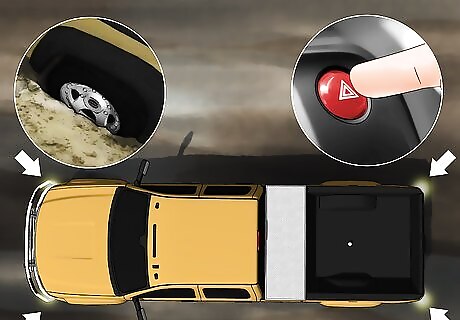
Turn on your hazard lights. If you somehow manage to get stuck, make your vehicle visible to others by flipping the switch to activate your hazard blinkers. If you have flares, activate them and place them around the outside of your car.
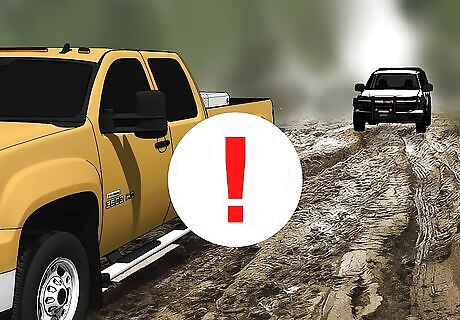
Watch for oncoming vehicles. Before you leave your vehicle, check your mirrors to see if any other cars are approaching. Go slowly when you do decide to get out to avoid slipping in the mud. If the conditions are too dangerous, stay in your car and call for emergency assistance.
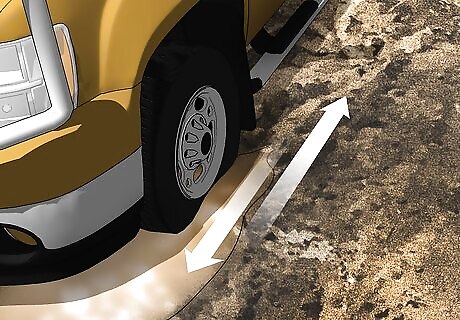
Try to rock the vehicle. Turn your steering wheel so that your tires face straightforward. Apply just a slight amount of pressure to the gas pedal and switch gears between drive and reverse. Stop everything if you feel the tires spinning continually. Turn the wheel so that your tires are at an angle and try again. For manual vehicles, this maneuver works best when in the highest gear. For automatics, go with the lowest gear possible.
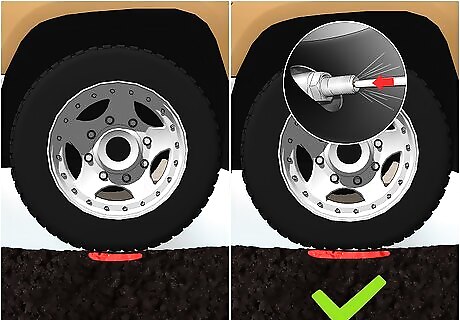
Lower your tire pressure a bit. If you get stuck in the mud, go to each tire and let out some air. Do this by applying a slight amount of pressure to the valve stem. Wait until you hear some air escaping and then re-check the pressure once more. This will give you some additional surface traction. Make sure to re-inflate them when you are back on solid ground.
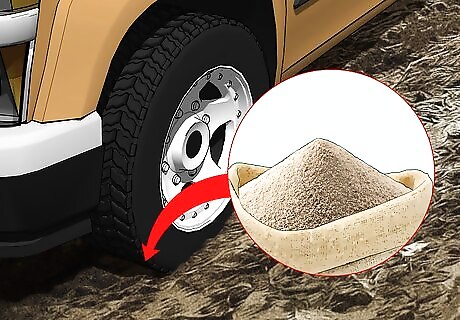
Apply sand or litter to the ground. Before each muddy season, store a bag of sand or a small container of kitty litter in your vehicle. If you get stuck, sprinkle the litter or sand around your tires to help with traction.
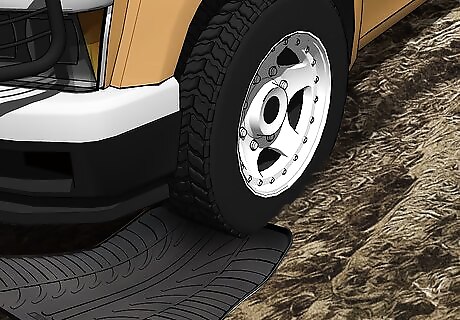
Place your car mats under your tires. If you are stuck, shift gears to park. Remove the mats from your car and place a single mat under each tire. Let the mat just barely touch the tire with the rest of it facing forward. This will give your car some solid ground to grip onto. When you get back on solid ground, go back to retrieve your mats. In the place of mats, you can also use two to four carpet strips or even pieces of cardboard.
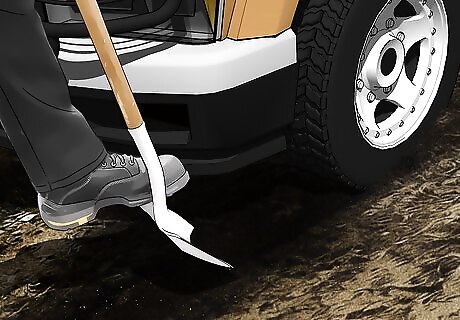
Dig out with a shovel. Keep a foldable outdoor shovel in the back of your vehicle. When you are stuck, use this shovel to dig out the space around your tires. If you can remove enough moisture from the area, then your tires will be able to grip the remaining dry ground. If you get desperate, look for items in your car that you can use as a shovel. For example, a spare tire cover could be used to lift away the dirt.
Anticipating Muddy Conditions

Avoid mud prone areas. A road that is unusually porous with poor drainage can become a mess really fast. Be especially careful if the area has experienced heavy rains or snow recently. Before you head out on a drive, especially in an unfamiliar location, it might be helpful to take a quick look at a weather app on your phone to see if the driving conditions might include rain or snow.

Choose the right tires. If you know that you will be driving a route with bad road conditions, try switching from all-terrain tires to a snow or mud tire. A mud tire has deeper grooves and grips, which can minimize sinking and improve traction. These tires will be louder on standard highways, as opposed to standard all-terrain tires, but the annoyance may be worth it during muddy seasons. As you are shopping for a mud tire, make sure to get one that does well on wet road conditions. Due to the deep treads, some mud tires have a tendency to lose grip on smooth, wet surfaces.
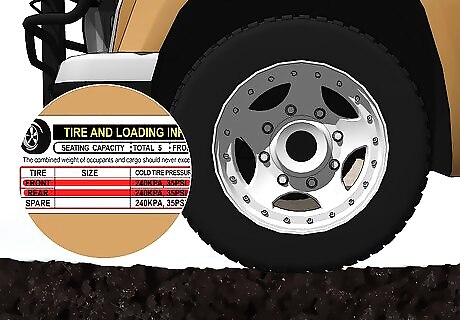
Maintain the correct tire pressure. Look in your owner’s manual or on the interior panel of your driver’s door for information regarding the proper tire pressure for your vehicle. Keeping your tires at this pressure, or just slightly under, will greatly improve the tire grip. It is a good idea to make pressure check on all of your tires part of your monthly care maintenance routine.
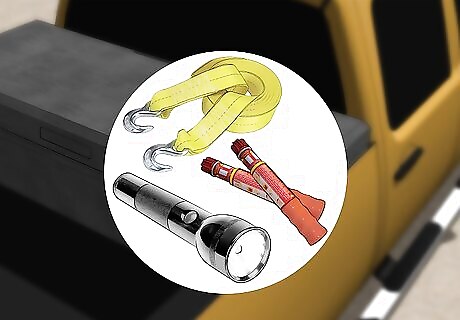
Carry safety items and traction aids with you. At the start of each muddy or rainy season, look of the contents of your car emergency kit. Make sure that you have flashlights, flares, and a warm blanket. To cope with muddy conditions, you’ll also want a tow strap and a jack. The jack may come as part of a tire changing kit.
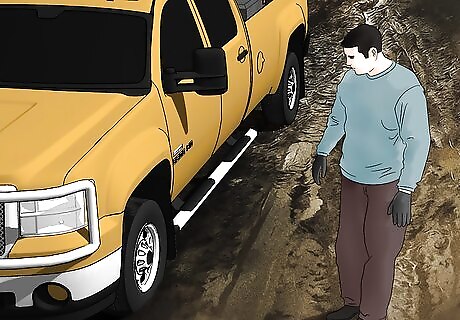
Take a driving course. Some driving schools offer classes that focus on navigating a vehicle over rough terrain and during poor weather conditions. Find a school near you by entering “off-road driving school” or “safety driving school” and your location into a search engine. For example, some schools will show drivers how to correctly attach tow straps and how to safely use other recovery strategies.

















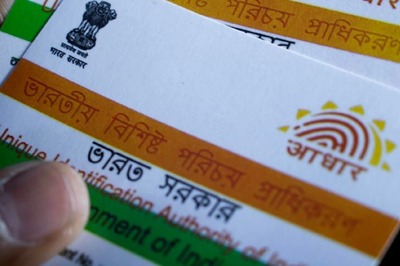

Comments
0 comment